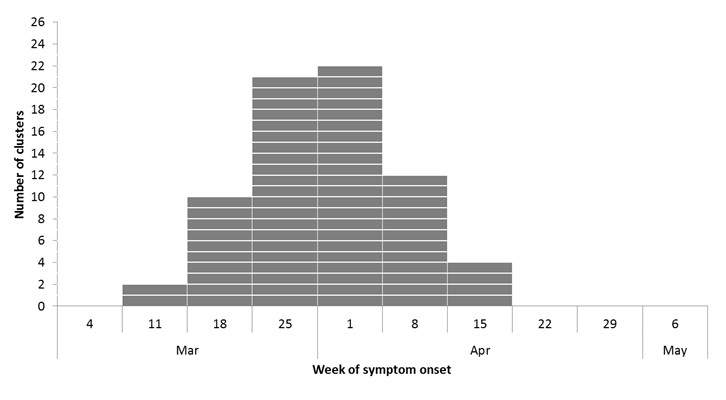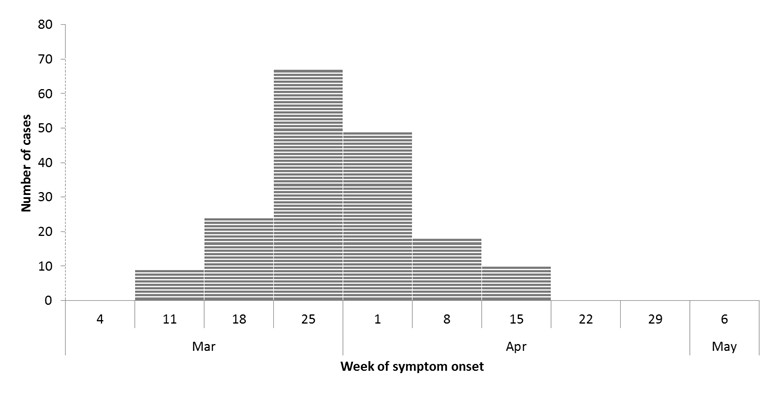Epidemiological information: Outbreak of norovirus infections linked to raw oysters
Related Public Health Notice
August 1, 2018
What is epidemiology?
Epidemiology is the study of disease in a population. Epidemiologists, or "disease detectives," use surveillance systems to identify those who are sick and confirm that the sick people are part of this event. They then gather information from the people who got sick and review the clues from all parts of the investigation that might reveal the cause of the illness event.
The figure below forms part of the epidemiological investigation into this outbreak. An "epi curve" (Figure 1) is a valuable reference tool in any epidemiological investigation. An epi curve shows when cases begin, when they peak, and when they trail off. Certain details of the people who got sick (Table 1) also help epidemiologists as they work to solve the questions involved in foodborne illness.
Figure 1: Reported number of clusters of norovirus or acute gastrointestinal illness associated with exposures to oysters, by week

Figure 1: Reported number of clusters of norovirus or acute gastrointestinal illness associated with exposures to oysters, by week - Text equivalent
| Week of symptom onset | Number of clusters |
|---|---|
| 11-Mar-2018 | 2 |
| 18-Mar-2018 | 10 |
| 25-Mar-2018 | 21 |
| 1-Apr-2018 | 22 |
| 8-Apr-2018 | 12 |
| 15-Apr-2018 | 4 |
| 22-Apr-2018 | 0 |
| 29-Apr-2018 | 0 |
| 6-May-2018 | 0 |
Figure 2: Reported number of cases of norovirus or acute gastrointestinal illness associated with consumption of oysters, by week

Figure 2: Reported number of cases of norovirus or acute gastrointestinal illness associated with consumption of oysters, by week
| Week of symptom onset | Number of cases |
|---|---|
| 11-Mar-2018 | 9 |
| 18-Mar-2018 | 24 |
| 25-Mar-2018 | 67 |
| 1-Apr-2018 | 49 |
| 8-Apr-2018 | 18 |
| 15-Apr-2018 | 9 |
| 22-Apr-2018 | 0 |
| 29-Apr-2018 | 0 |
| 6-May-2018 | 0 |
| Outbreak status | Ongoing |
|---|---|
| Case count | 176 |
| Provinces/Territories | 3 |
| Deaths | 0 |
| Recall | No |